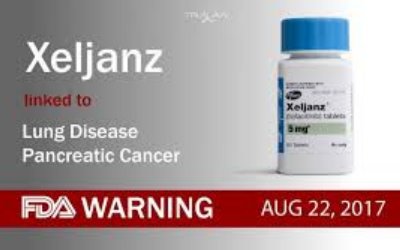Xeljanz Side Effects Are Potentially Fatal
Since 2012, doctors have been treating autoimmune diseases like rheumatoid arthritis, psoriatic arthritis, and ulcerative colitis with a drug called tofacitinib. This drug is also known as Xeljanz and it works by suppressing immune system function. This makes sense for treating autoimmune diseases, but it comes at the price of dangerous and fatal side effects.
Xeljanz side effects
The Xeljanz and Xeljanz XR labels warn patients of the following side effects:
-
Serious infections
-
Lymphoma, non-melanoma skin cancer, and other types of cancer
-
Stomach and intestine perforations
-
Lab result abnormalities like liver enzyme elevations
-
Hypersensitivity
All of the side effects listed above have been listed on the label from the start, but the risk of fatal blood clots was not included in the list of side effects.
Xeljanz can cause fatal blood clots
Blood clots are extremely dangerous and can be fatal depending on their size and where they are located. Patients who have taken Xeljanz have reported multiple forms of venous thromboembolic events. For example, many patients developed blood clots in the lungs and in veins deep within their legs. Blood clots in both of these locations can be fatal.
Xeljanz patients weren’t warned about the blood clot risk
Unfortunately for innocent patients, Xeljanz didn’t come with a warning about potential blood clots until seven years after the drug was approved. The FDA required an ongoing safety study back in 2012, but the potential for blood clots as a fatal side effect wasn’t discovered until 2019.
The clinical safety trial that began in 2012 confirmed that Xeljanz increases the risk of developing blood clots in the lungs. The study confirmed a higher rate of pulmonary embolism in patients taking 20mg of Xeljanz per day. The risk of death was also increased in this group compared to the control group and the group of patients taking 10mg doses of Xeljanz per day.
Seven years after the FDA approved Xeljanz, the drug manufacturer (Pfizer) announced the risk and added a warning to the box. However, for hundreds of patients this warning came too late.
Have you experienced venous thromboembolic events after taking Xeljanz?
If you’ve been taking Xeljanz, Xeljanz XR, or tofacitinib, the following symptoms indicate a possible pulmonary embolism (a blood clot that travels to the lungs) or deep vein thrombosis (DVT):
Symptoms of pulmonary embolism:
-
Difficulty breathing/shortness of breath
-
Chest or back pain
-
Extreme sweating
-
Blue or clammy skin
-
Coughing up blood
Symptoms of DVT:
-
Swollen leg(s)
-
Pain in your leg, similar to a cramp
-
Discolored skin
-
A warm sensation
If you’re experiencing any of the above symptoms, seek immediate medical care and then contact an attorney. You might have a case against the makers of Xeljanz.
Hundreds of people have been harmed by Xeljanz side effects
By the end of March 2019, the FDA documented 109 self-reported cases of pulmonary embolism, 14 of which were fatal. A total of 63 people experienced deep vein thrombosis with five fatalities.
Since the side effects are just now being publicized, people may have experienced adverse reactions they didn’t connect to the drug. These numbers may not represent the true number of patients harmed by this dangerous drug.

Is it time to contact an attorney?
Many patients have filed lawsuits against Pfizer for medical bills, lost wages, and pain and suffering. If you’ve been harmed by the side effects of Xeljanz, contact an attorney right away to discuss your case.